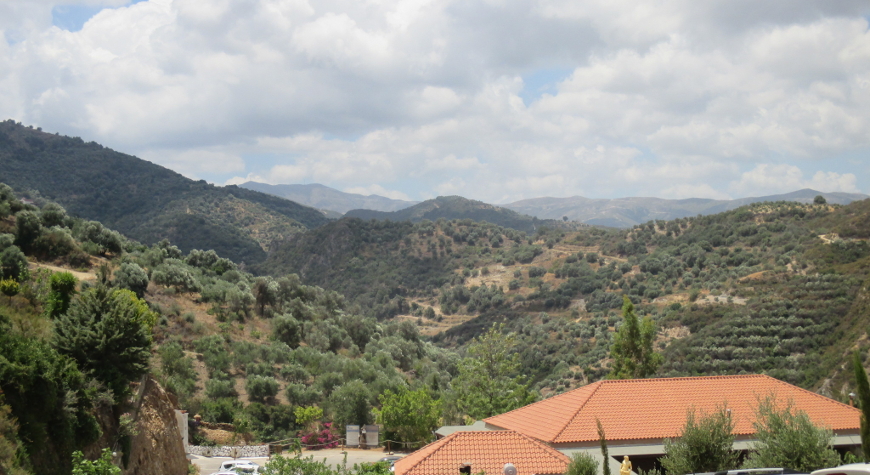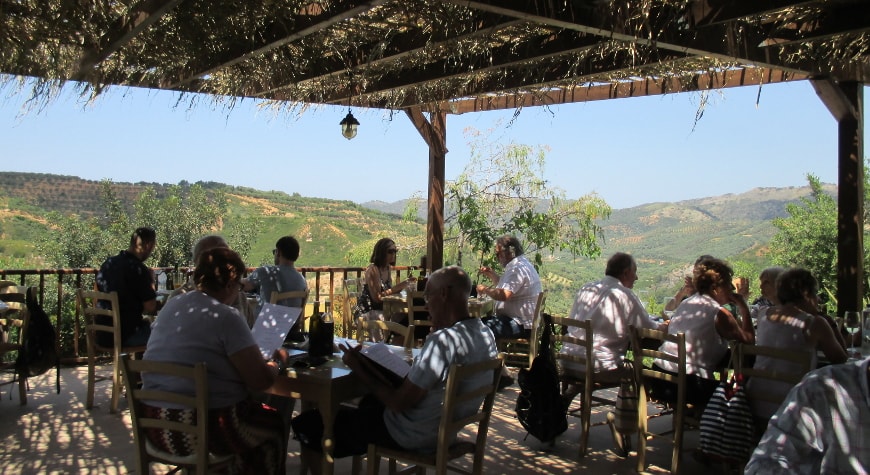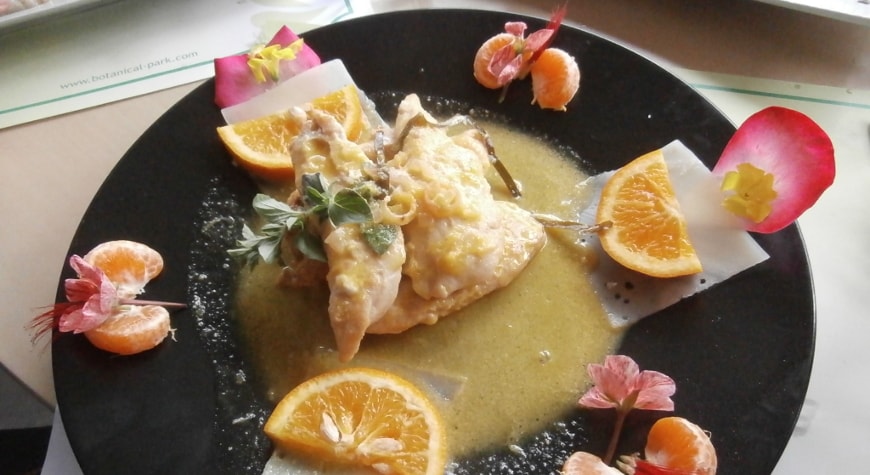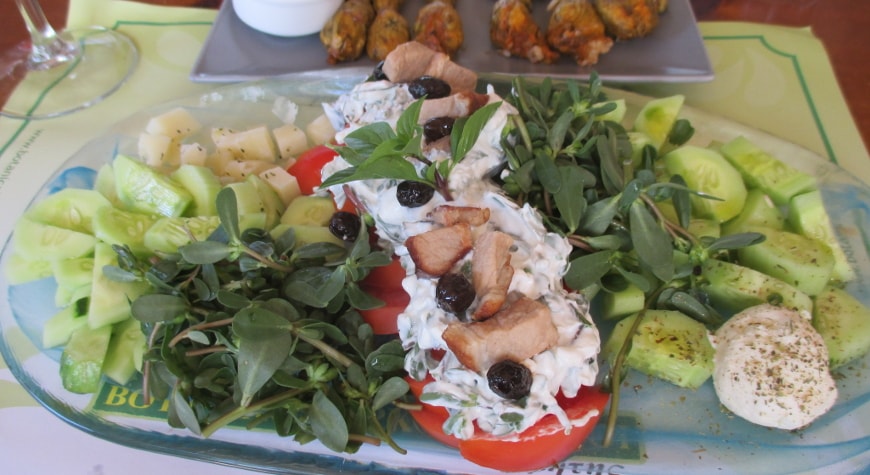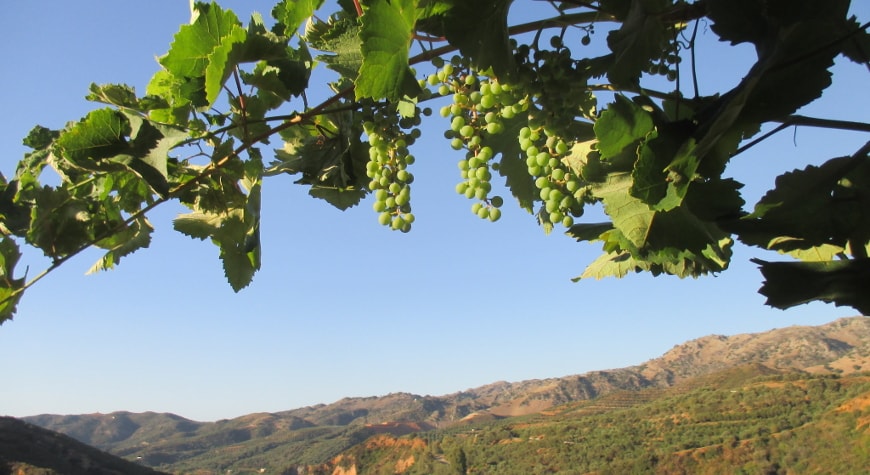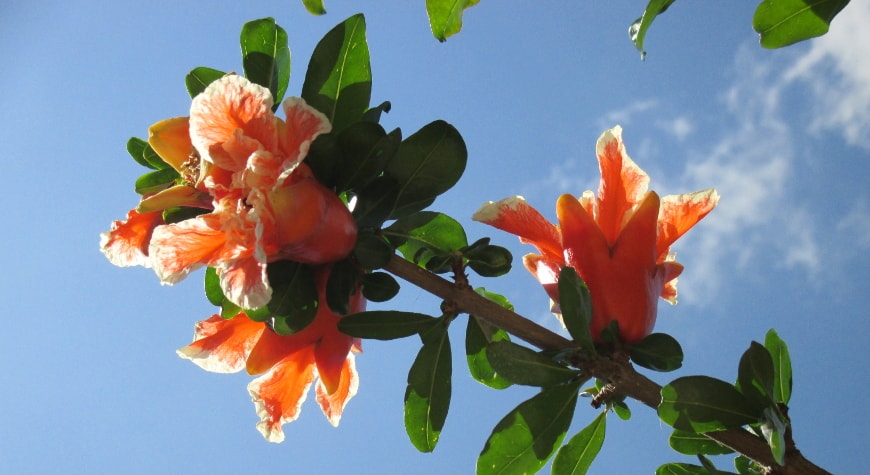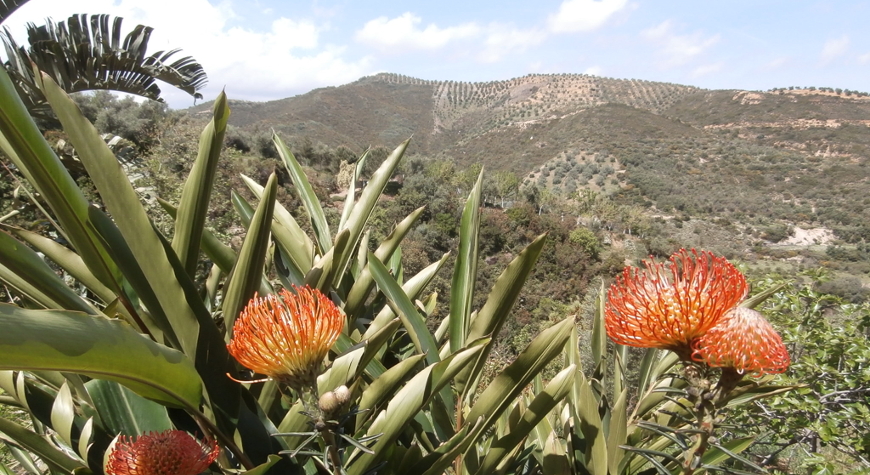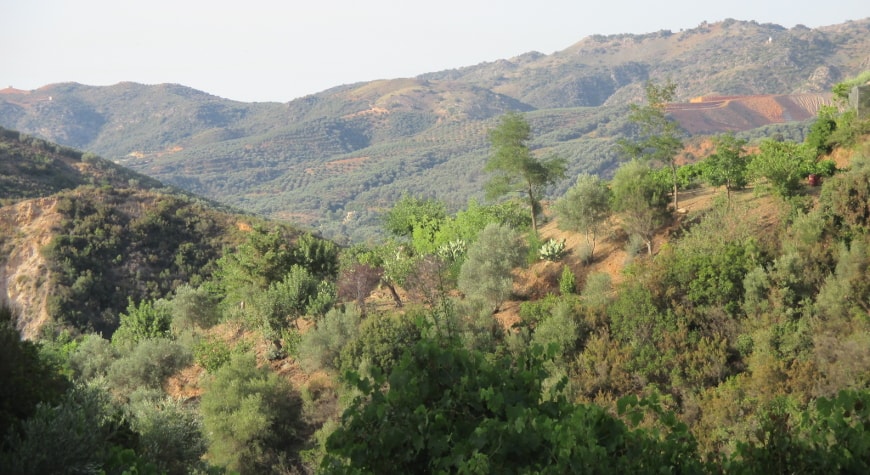Surrounded by olive groves in the foothills of the White Mountains, the Botanical Park and Gardens of Crete offers natural beauty, exercise, information, and healthy, tasty food. Overflowing with tropical and Mediterranean flowers, herbs, and fruits, the park surrounds an acclaimed restaurant featuring its own organically grown produce and olive oil.
According to its website, “The theme of the whole park is ‘Return to the Cretan soil and, at the same time, return to Cretan Tradition and Diet.’” For the Marinakis brothers, this return was also a rebirth from the ashes of a great wildfire that destroyed the 60,000 olive trees and many orange groves that provided the basis for the economy of the nearby village of Skordalou until 2003. Open to the public since April 2009, the park offers more than 40 acres for walking, enjoyment of natural beauty, education about food origins and the Cretan diet, relaxation, and entertainment.
The Marinakis family has successfully linked the alternative tourism venture of their beautiful park, which attracts tens of thousands of visitors annually, with the spacious indoor/outdoor hilltop restaurant where both traditional and innovative dishes are enjoyed along with the panoramic view. Popular with locals as well as tourists, the Botanical Park’s restaurant has been awarded the Quality Label of Cretan Cuisine by the Region of Crete, which recognizes its use of local ingredients, extra virgin olive oil, and Cretan wines and dishes as well as adherence to high standards of quality and hygiene.
The multilingual menu with its background of flower photos features a variety of seasonal salads, some quite unusual. It also includes potatoes fried in olive oil, kalitsounia (small pies) with greens and cheese, and excellent bread with olives and the family’s own olive oil, which is produced in a nearby village. There are typical Cretan foods such as boureki (zucchini, potato, and cheese casserole), sausages, grilled meats, artichokes with broad beans, and rooster with tomato sauce, herbs, and noodles. There are also more unusual entrees, such as the exquisite chicken with orange, lime, and lemon grass sauce and the pork fillet with figs, honey, vinegar, and brandy--a sweet, rich dish artistically presented with baked potato, sweet yogurt and bergamot sauce, and dabs of a pink sauce containing beets.
Walk through the park and gardens in the cool morning before you eat, or else after you’ve fully digested in the late afternoon (at least one hour before sunset). Walk among banana trees that tower above the path. Walk through the sweetness of jasmine flowers, past cherry trees, fragrant rosemary and lavender, orange trees always laden with balls of fruit as if decorated for a festive Christmas, to a pond with ducks and geese. Continue past Cretan wild goats and deer, up the hill through the perfume of glorious rose bushes with five colors of enormous blossoms, into the shady tunnel of a grape arbor, past strikingly geometric artichokes prospering across from brilliant pink and red geraniums, near silvery green clumps of waving herbs backlit in the orchards, up past a wooden loom and a tree hung with farming tools, around and up the hill.
One day on that carefully planned hillside and valley, a turkey and a peacock took turns posing until some undisciplined boys chased them away and provoked the geese to wild honks of protest. Tourists and students talked and joked as they took turns photographing friends in prime photo spots next to exotic flowers, burnt olive tree trunks, and an antique wagon in the orange grove near the duck pond. Bees paused to buzz among blossoms as butterflies flitted between flowers. Brilliant red-orange flowers with frilly white edges mixed with baby pomegranate fruits against the bright blue sky.
Nestled in the foothills of the White Mountains, foothills partly wild and partly covered with neat rows of olive trees, there are enough plants and prospects to admire that the exertion of the climb back up the hillside merely provides the physically fit with an exhilarating excuse to stop and appreciate a flower, a view, or an informative sign. For the physically challenged, there is a shorter route available, although it does not avoid a climb, and there are plenty of rustic wooden benches and seats that invite everyone to take a break. An old-fashioned bed resting among dozens of varieties of fruit trees emphasizes the peacefulness of the setting.
Additional notes
See the Botanical Park’s lovely new website for more information about its location, opening hours, and admission fees. Traditional Cretan dances are presented in the amphitheater after dinner on Monday evenings, while the philosophy of the Cretan diet, a way of life with a basis in olive oil, wild greens, herbs, and fresh locally grown produce, is presented on Saturday mornings. Groups can also arrange presentations on the health benefits and general principles of the Cretan diet or cooking lessons focused on typical Cretan foods, using herbs and vegetables gathered in the park.



